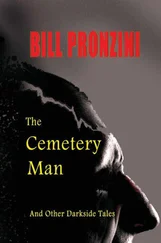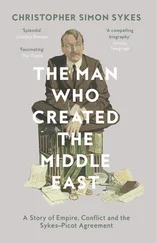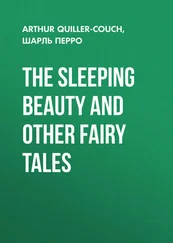Oliver Sacks - The Man Who Mistook His Wife For A Hat and Other Clinical Tales
Здесь есть возможность читать онлайн «Oliver Sacks - The Man Who Mistook His Wife For A Hat and Other Clinical Tales» весь текст электронной книги совершенно бесплатно (целиком полную версию без сокращений). В некоторых случаях можно слушать аудио, скачать через торрент в формате fb2 и присутствует краткое содержание. Город: New York, Год выпуска: 1970, ISBN: 1970, Издательство: Harper Collins, Жанр: Психология, на английском языке. Описание произведения, (предисловие) а так же отзывы посетителей доступны на портале библиотеки ЛибКат.
- Название:The Man Who Mistook His Wife For A Hat and Other Clinical Tales
- Автор:
- Издательство:Harper Collins
- Жанр:
- Год:1970
- Город:New York
- ISBN:0-06-097079-0
- Рейтинг книги:5 / 5. Голосов: 1
-
Избранное:Добавить в избранное
- Отзывы:
-
Ваша оценка:
- 100
- 1
- 2
- 3
- 4
- 5
The Man Who Mistook His Wife For A Hat and Other Clinical Tales: краткое содержание, описание и аннотация
Предлагаем к чтению аннотацию, описание, краткое содержание или предисловие (зависит от того, что написал сам автор книги «The Man Who Mistook His Wife For A Hat and Other Clinical Tales»). Если вы не нашли необходимую информацию о книге — напишите в комментариях, мы постараемся отыскать её.
The Man Who Mistook His Wife For A Hat and Other Clinical Tales — читать онлайн бесплатно полную книгу (весь текст) целиком
Ниже представлен текст книги, разбитый по страницам. Система сохранения места последней прочитанной страницы, позволяет с удобством читать онлайн бесплатно книгу «The Man Who Mistook His Wife For A Hat and Other Clinical Tales», без необходимости каждый раз заново искать на чём Вы остановились. Поставьте закладку, и сможете в любой момент перейти на страницу, на которой закончили чтение.
Интервал:
Закладка:
‘Yes,’ I said cautiously. ‘You have given me a description. Now tell me what it is.’
‘A container of some sort?’
‘Yes,’ I said, ‘and what would it contain?’
‘It would contain its contents!’ said Dr P., with a laugh. ‘There are many possibilities. It could be a change purse, for example, for coins of five sizes. It could . . .’
I interrupted the barmy flow. ‘Does it not look familiar? Do you think it might contain, might fit, a part of your body?’
No light of recognition dawned on his face. [1] Later, by accident, he got it on, and exclaimed, ‘My God, it’s a glove!’ This was reminiscent of Kurt Goldstein’s patient ‘Lanuti’, who could only recognise objects by trying to use them in action.
No child would have the power to see and speak of ‘a continuous surface . . . infolded on itself,’ but any child, any infant, would immediately know a glove as a glove, see it as familiar, as going with a hand. Dr P. didn’t. He saw nothing as familiar. Visually, he was lost in a world of lifeless abstractions. Indeed, he did not have a real visual world, as he did not have a real visual self. He could speak about things, but did not see them face-to-face. Hughlings Jackson, discussing patients with aphasia and left-hemisphere lesions, says they have lost ‘abstract’ and ‘propositional’ thought—and compares them with dogs (or, rather, he compares dogs to patients with aphasia). Dr P., on the other hand, functioned precisely as a machine functions. It wasn’t merely that he displayed the same indifference to the visual world as a computer but—even more strikingly—he construed the world as a computer construes it, by means of key features and schematic relationships. The scheme might be identified—in an ‘identi-kit’ way—without the reality being grasped at all.
The testing I had done so far told me nothing about Dr P.’s inner world. Was it possible that his visual memory and imagination were still intact? I asked him to imagine entering one of our local squares from the north side, to walk through it, in imagination or in memory, and tell me the buildings he might pass as he walked. He listed the buildings on his right side, but none of those on his left. I then asked him to imagine entering the square from the south. Again he mentioned only those buildings that were on the right side, although these were the very buildings he had omitted before. Those he had ‘seen’ internally before were not mentioned now; presumably, they were no longer ‘seen’. It was evident that his difficulties with leftness, his visual field deficits, were as much internal as external, bisecting his visual memory and imagination.
What, at a higher level, of his internal visualisation? Thinking of the almost hallucinatory intensity with which Tolstoy visualises and animates his characters, I questioned Dr P. about Anna Kar-enina . He could remember incidents without difficulty, had an undiminished grasp of the plot, but completely omitted visual characteristics, visual narrative, and scenes. He remembered the words of the characters but not their faces; and though, when asked, he could quote, with his remarkable and almost verbatim memory, the original visual descriptions, these were, it became apparent, quite empty for him and lacked sensorial, imaginal, or emotional reality. Thus, there was an internal agnosia as well [2] I have often wondered about Helen Keller’s visual descriptions, whether these, for all their eloquence, are somehow empty as well? Or whether, by the transference of images from the tactile to the visual, or, yet more extraordinarily, from the verbal and the metaphorical to the sensorial and the visual, she did achieve a power of visual imagery, even though her visual cortex had never been stimulated, directly, by the eyes? But in Dr P.’s case it is precisely the cortex that was damaged, the organic prerequisite of all pictorial imagery. Interestingly and typically he no longer dreamed pictonally—the ‘message’ of the dream being conveyed in nonvisual terms.
But this was only the case, it became clear, with certain sorts of visualisation. The visualisation of faces and scenes, of visual narrative and drama—this was profoundly impaired, almost absent. But the visualisation of schemata was preserved, perhaps enhanced. Thus, when I engaged him in a game of mental chess, he had no difficulty visualising the chessboard or the moves— indeed, no difficulty in beating me soundly.
Luria said of Zazetsky that he had entirely lost his capacity to play games but that his ‘vivid imagination’ was unimpaired. Zazetsky and Dr P. lived in worlds which were mirror images of each other. But the saddest difference between them was that Zazetsky, as Luria said, ‘fought to regain his lost faculties with the indomitable tenacity of the damned,’ whereas Dr P. was not fighting, did not know what was lost, did not indeed know that anything was lost. But who was more tragic, or who was more damned— the man who knew it, or the man who did not?
When the examination was over, Mrs P. called us to the table, where there was coffee and a delicious spread of little cakes. Hungrily, hummingly, Dr P. started on the cakes. Swiftly, fluently, unthinkingly, melodiously, he pulled the plates towards him and took this and that in a great gurgling stream, an edible song of food, until, suddenly, there came an interruption: a loud, peremptory rat-tat-tat at the door. Startled, taken aback, arrested by the interruption, Dr P. stopped eating and sat frozen, motionless, at the table, with an indifferent, blind bewilderment on his face. He saw, but no longer saw, the table; no longer perceived it as a table laden with cakes. His wife poured him some coffee: the smell titillated his nose and brought him back to reality. The melody of eating resumed.
How does he do anything? I wondered to myself. What happens when he’s dressing, goes to the lavatory, has a bath? I followed his wife into the kitchen and asked her how, for instance, he managed to dress himself. ‘It’s just like the eating,’ she explained. ‘I put his usual clothes out, in all the usual places, and he dresses without difficulty, singing to himself. He does everything singing to himself. But if he is interrupted and loses the thread, he comes to a complete stop, doesn’t know his clothes—or his own body. He sings all the time—eating songs, dressing songs, bathing songs, everything. He can’t do anything unless he makes it a song.’
While we were talking my attention was caught by the pictures on the walls.
‘Yes,’ Mrs P. said, ‘he was a gifted painter as well as a singer. The School exhibited his pictures every year.’
I strolled past them curiously—they were in chronological order. All his earlier work was naturalistic and realistic, with vivid mood and atmosphere, but finely detailed and concrete. Then, years later, they became less vivid, less concrete, less realistic and naturalistic, but far more abstract, even geometrical and cubist. Finally, in the last paintings, the canvasses became nonsense, or nonsense to me—mere chaotic lines and blotches of paint. I commented on this to Mrs P.
‘Ach, you doctors, you’re such Philistines!’ she exclaimed. ‘Can you not see artistic development—how he renounced the realism of his earlier years, and advanced into abstract, nonrepresenta-tional art?’
‘No, that’s not it,’ I said to myself (but forbore to say it to poor Mrs P.). He had indeed moved from realism to nonrepresentation to the abstract, yet this was not the artist, but the pathology, advancing—advancing towards a profound visual agnosia, in which all powers of representation and imagery, all sense of the concrete, all sense of reality, were being destroyed. This wall of paintings was a tragic pathological exhibit, which belonged to neurology, not art.
Читать дальшеИнтервал:
Закладка:
Похожие книги на «The Man Who Mistook His Wife For A Hat and Other Clinical Tales»
Представляем Вашему вниманию похожие книги на «The Man Who Mistook His Wife For A Hat and Other Clinical Tales» списком для выбора. Мы отобрали схожую по названию и смыслу литературу в надежде предоставить читателям больше вариантов отыскать новые, интересные, ещё непрочитанные произведения.
Обсуждение, отзывы о книге «The Man Who Mistook His Wife For A Hat and Other Clinical Tales» и просто собственные мнения читателей. Оставьте ваши комментарии, напишите, что Вы думаете о произведении, его смысле или главных героях. Укажите что конкретно понравилось, а что нет, и почему Вы так считаете.











